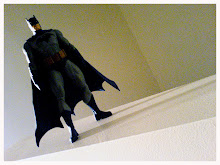
Commuting by bicycle gave me a whole new perspective on my surroundings. As I rode along the streets of Toronto, especially in the downtown area, I marveled at how much I had missed when I took the same routes by car. A car shields you from so much. The smells. The noise. The people. I drank in this new world.
A few months after my initial modifications, I saved enough money to purchase my first clipless pedal system. I waited impatiently as the technician mounted a pair of Shimano SPD pedals onto my bike's crank arms. To pass the time, I walked around in my new Shimano SPD cleated shoes. Their soles were quite stiff but this offered a level of support I had not experienced in my regular walking shoes. The SPD design, with the cleat recessed into the sole of the shoe, also granted me the freedom to walk around as if I was wearing a normal shoe.
 Part of the advantage of a clipless pedal system is in the cleat to pedal connection. In a traditional pedal system, even with the aid of toe clips, the power transferred to the pedal by a rider is at peak efficiency during the downward pedal stroke. Inversely, 50% of the power exerted through a spin cycle is lost during the upward pedal stroke. Essentially you are wasting half your exerted energy and this contributes to unnecessary fatigue.
Part of the advantage of a clipless pedal system is in the cleat to pedal connection. In a traditional pedal system, even with the aid of toe clips, the power transferred to the pedal by a rider is at peak efficiency during the downward pedal stroke. Inversely, 50% of the power exerted through a spin cycle is lost during the upward pedal stroke. Essentially you are wasting half your exerted energy and this contributes to unnecessary fatigue.Another part of the advantage of a clipless pedal system is the greater integration of the shoe into equation. A traditional shoe to pedal system only sees power being transferred through the frontal area of the shoe. The whole shoe, in a clipless pedal system, becomes part of the pedaling cycle. So not only is power transferred efficiently but more of it is transferred as well while using this system.


(On to chapter 5.)








No comments:
Post a Comment